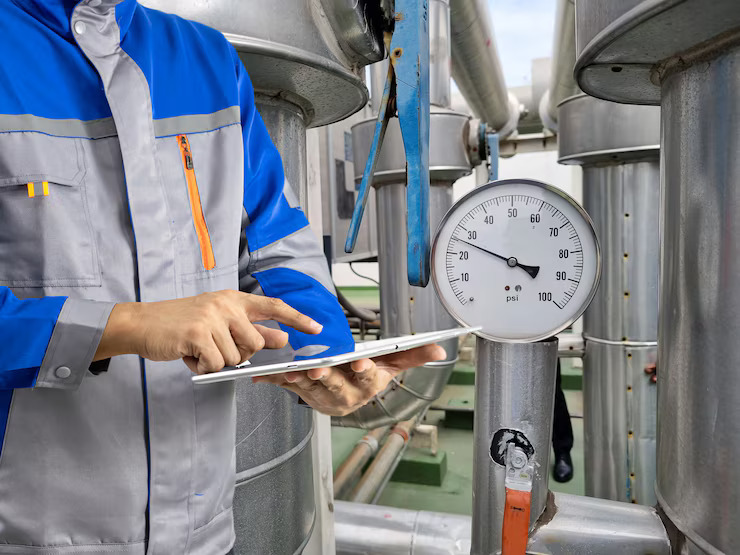Introduction
Torque testers play a crucial role in many industries, especially where precise tightening of bolts, screws, and other fasteners is essential. Whether in automotive assembly, aerospace engineering, pharmaceutical production, or electronics manufacturing, applying the correct torque is critical to safety, product performance, and regulatory compliance. But how can you be sure your torque tester is giving accurate readings? The answer lies in regular torque tester calibration.
Calibration ensures that your torque measurement devices are functioning correctly, providing readings that are traceable to national or international standards. This article explores what torque tester calibration is, why it’s important, how it’s done, and the standards and best practices involved.
What is a Torque Tester?
A torque tester is a device used to measure and verify the torque applied to a fastener or a torque tool (like a torque wrench or screwdriver). Torque is the force used to rotate an object and is usually measured in units such as Nm (Newton meters), lb-ft (pound-feet), or in-lb (inch-pounds).
Torque testers are used:
- To calibrate torque tools
- In quality control for manufacturing
- During maintenance and safety inspections
- For ensuring compliance in regulated industries
Why is Torque Tester Calibration Important?
- Accuracy and Reliability
Over time and with frequent use, torque testers can drift from their original accuracy. Calibration brings them back within acceptable tolerance limits, ensuring that torque measurements are trustworthy. - Compliance with Standards
Industries such as aerospace, automotive, and medical devices require compliance with strict standards like ISO 6789, ASTM D3479, or NIST traceability. Regular calibration ensures that your equipment meets these regulatory requirements. - Product Safety
Under-tightening can lead to loose parts or leaks, while over-tightening can damage components or create safety risks. Accurate torque measurement is essential for product safety and integrity. - Cost Savings
Preventing torque errors helps avoid costly product recalls, production downtime, and equipment failure. - Audit Readiness
Calibration records are often required during audits and inspections. A traceable calibration history improves your documentation and audit readiness.
How is Torque Tester Calibration Done?
Torque tester calibration should be performed by qualified professionals in a controlled laboratory environment using traceable standards. Here’s a general overview of the process:
1. Pre-Calibration Inspection
- Visual inspection for any physical damage or wear
- Checking the battery, display screen, and connectors
- Verifying that the device functions correctly before calibration
2. Calibration Setup
- The torque tester is mounted securely in a calibration stand or rig.
- A master torque transducer or standard reference device (previously calibrated and traceable to national standards) is used as the reference.
3. Application of Known Loads
- A series of known torque values (usually at multiple points across the torque range, such as 20%, 40%, 60%, 80%, and 100%) are applied.
- The torque tester’s readings are compared to the known values.
4. Adjustment (If Required)
- If deviations are found beyond acceptable tolerance, the tester is adjusted or repaired to bring it back into specification.
5. Re-Verification
- After adjustments, the process is repeated to verify that the tester now reads accurately at all calibration points.
6. Issuance of Calibration Certificate
- A detailed report is issued that includes:
- Measured values and corresponding reference values
- Date of calibration
- Equipment used for calibration
- Environmental conditions
- Technician’s signature
- Traceability to national/international standards
Standards and Guidelines for Torque Calibration
Torque calibration typically follows these standards:
- ISO 6789 – for hand torque tools
- ASME B107.300 – for torque instrument specifications
- NIST/NPL traceability – ensuring calibration equipment is linked to national measurement standards
It’s important to choose an accredited calibration lab that adheres to ISO/IEC 17025, which certifies the technical competence of testing and calibration laboratories.
Recommended Calibration Frequency
The frequency of torque tester calibration depends on several factors:
- Manufacturer’s recommendation (typically every 6 to 12 months)
- Frequency of use
- Criticality of application
- Operating conditions (e.g., exposure to heat, moisture, or rough handling)
Some industries may require more frequent calibration, especially if the torque tester is used in mission-critical applications.
Types of Torque Testers That Require Calibration
- Digital Torque Testers
- Mechanical Dial Torque Testers
- Rotary and Static Torque Transducers
- Screwdriver Torque Testers
- Bench-mounted Torque Calibration Systems
Each type may have different calibration requirements based on its design and usage.
Choosing a Calibration Provider
When selecting a calibration service provider, look for:
- ISO 17025 accreditation
- Experienced technicians
- Fast turnaround times
- Detailed reporting and record keeping
- On-site calibration availability (if needed)
Some labs also offer online certificate access, calibration reminders, and equipment tracking systems for client convenience.
Conclusion
Torque tester calibration is an essential practice for maintaining the accuracy, safety, and compliance of your torque measurement tools. With growing emphasis on precision and accountability across industries, ensuring your torque testers are regularly calibrated is both a technical and business necessity.
From reducing errors to meeting international standards, torque tester calibration is not just a maintenance task—it’s a smart investment in quality, safety, and reliability. Make it a part of your regular equipment care routine and keep your operations running smoothly and confidently.


